
National Foster Care Month has been celebrated every May since 1988, and for good reason. In education, foster youth face unique challenges and require special support to enroll and persist.
“I am a foster kid with a college degree. That shouldn’t be rare, but it is,” reads the headline of Tamara Vest’s Courier Journal opinion piece. At nine years old, Vest lost her father to cancer, and her biological mother was unable to care for her.
Like so many foster care students facing struggles with finances, housing, mental health, and relational support, Vest ran into multiple challenges. She says a foster and adoptive tuition waiver ultimately saved her, and she was able to earn a degree. She’s one of the lucky few to do so.
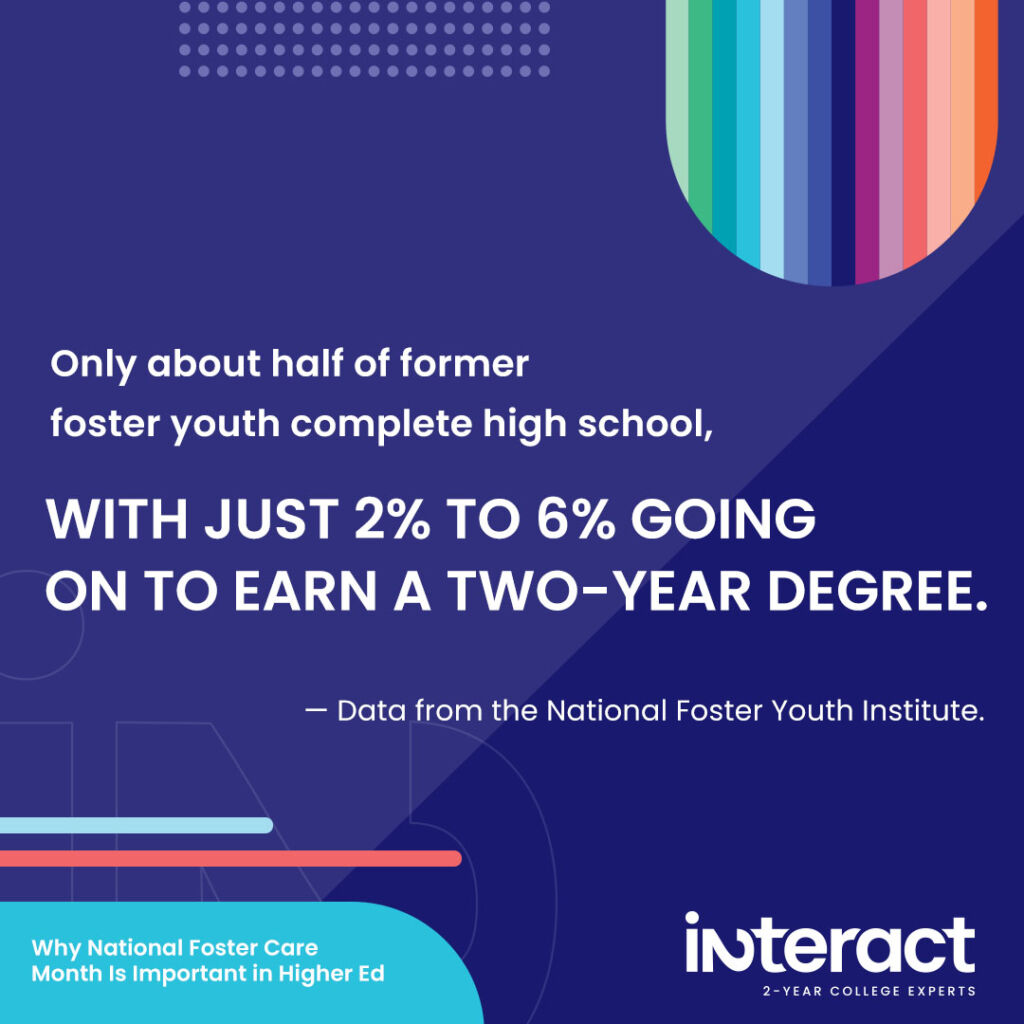
Only about half of former foster youth complete high school, with just 2% to 6% going on to earn a two-year degree, according to data from the National Foster Youth Institute. Meanwhile, only 3% to 4% continue to earn a four-year degree.
“I wasn’t really thinking about college,” says student Marowa in the article, “College Felt Impossible to This Student in Foster Care. Then NYC Offered to Pay.” “I was just thinking about surviving.”
Marowa was placed in foster care after facing physical abuse from her family. But with academic, career, and life coaching, plus financial and housing assistance, she was able to graduate from Brooklyn College with a BA in English. One day, she dreams of becoming a foster mom herself.
What is the difference between a college success story and becoming just another statistic for foster youth? Keep reading our National Foster Care Month blog to find out!

National Foster Care Month Statistics: Up Against the Odds
Foster youth are up against many hurdles in higher education and their future careers.
According to Insight into Diversity, only 2 in 10 foster youth will go on from high school to college, compared with 6 in 10 of all college-bound high school grads in the country. This statistic has implications for these students’ earning potential. Only 1 in 2 former foster youth is employed within four years of aging out of the system. And for those with jobs, their average annual income is only $7,500.
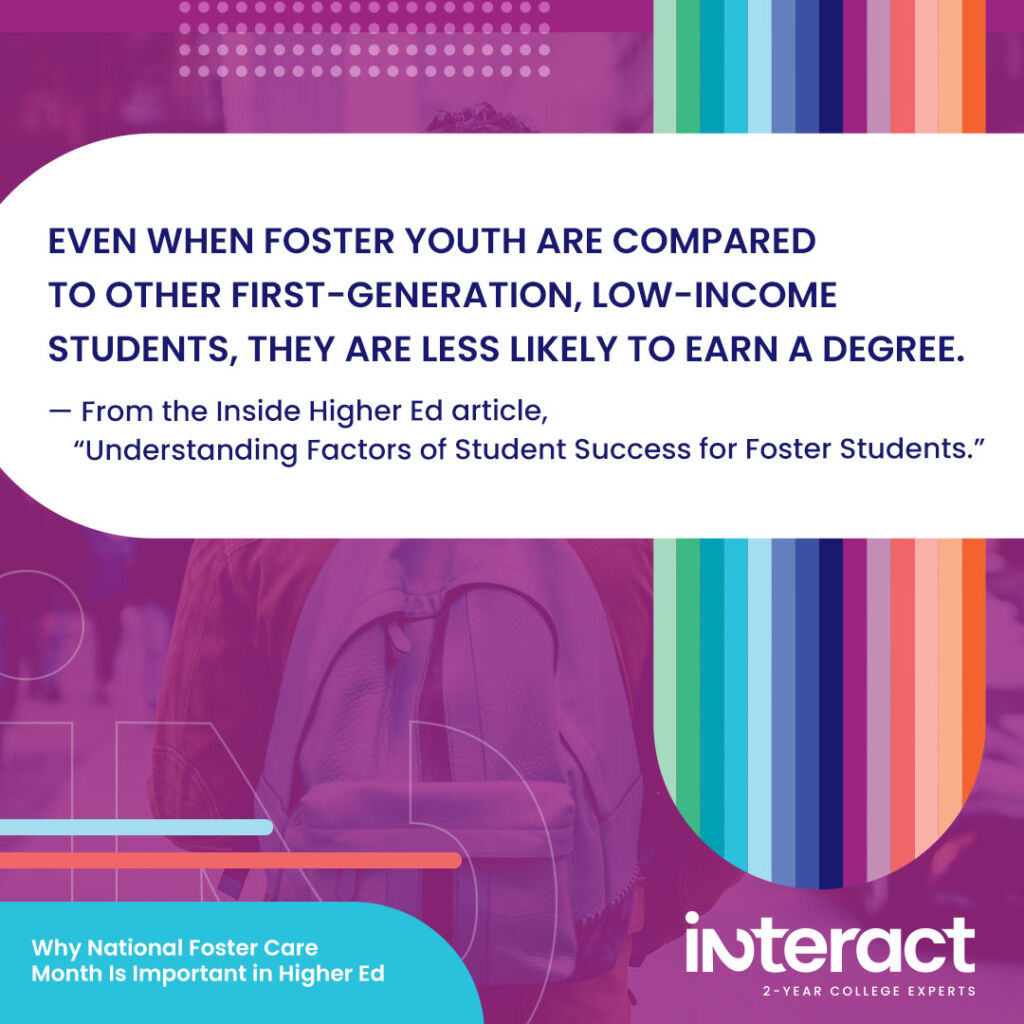
Even when foster youth are compared to other first-generation, low-income students, they are less likely to earn a degree, according to the Inside Higher Ed article, “Understanding Factors of Student Success for Foster Students.” Moreover, while first-generation and low-income students persist at around 75%, the rate for foster youth is less than 50%.
This issue is especially pressing in California. According to a 2023 report from the University of California, Los Angeles, the state is home to the largest foster care population in the country. More than 50,000 foster youth reside in the Golden State and need extra support to earn degrees.
“Young adults with foster care histories face a unique set of challenges above and beyond those of other groups that universities and colleges often identify as ‘at risk’ of dropping out,” states the Institute for Research on Poverty report, “When Foster Youth Go to College: Assessing Barriers and Supports to Degree Completion for College Students with Foster Care Histories.” They say colleges need robust policies and practices to help these students overcome challenges. “This is especially the case at 2-year institutions, where youth with care histories most commonly enroll.”
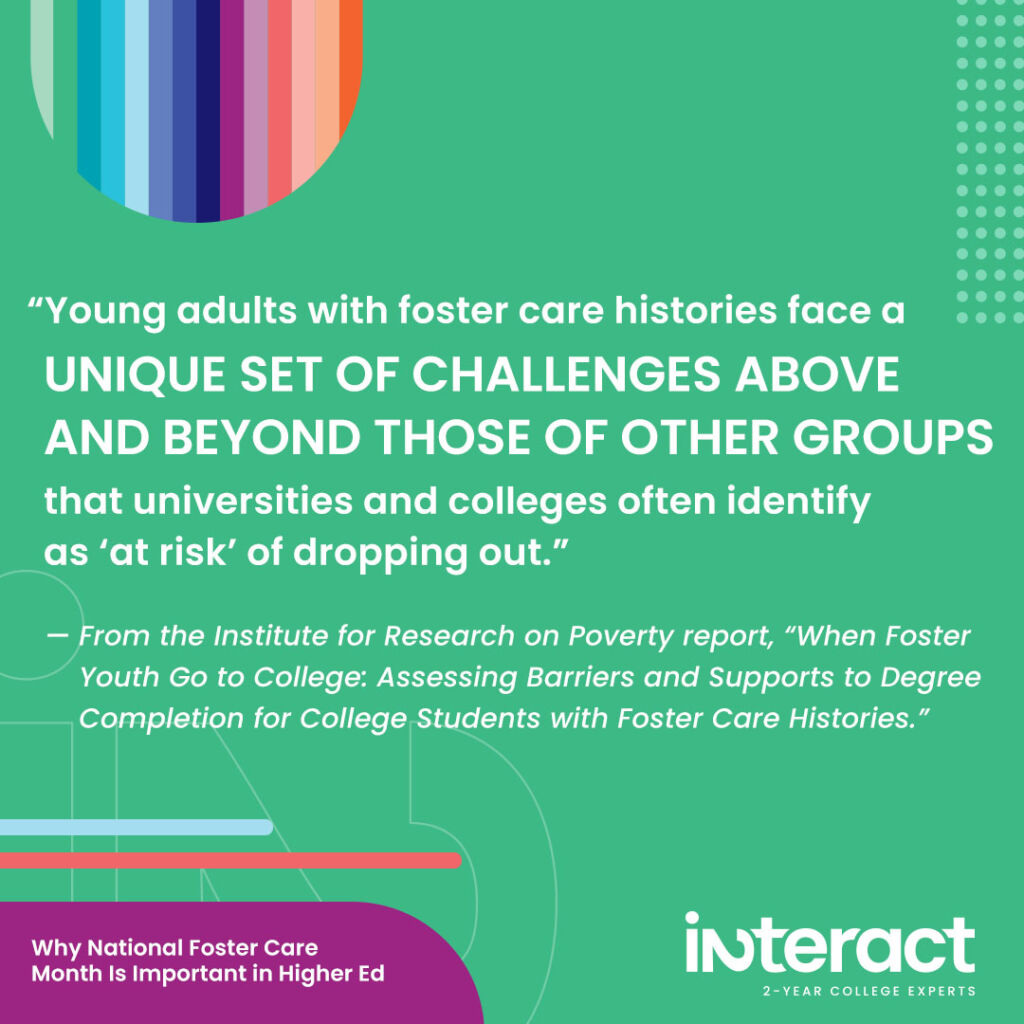
What Barriers Do Foster Youth Face?
It’s crucial to support foster youth during National Foster Care Month and all year round. According to the Institute for Research on Poverty, foster youth are up against three major retention hurdles:
- Many foster youths need to work full-time.
- Many also have children.
- And finally, most foster youth face economic hurdles.
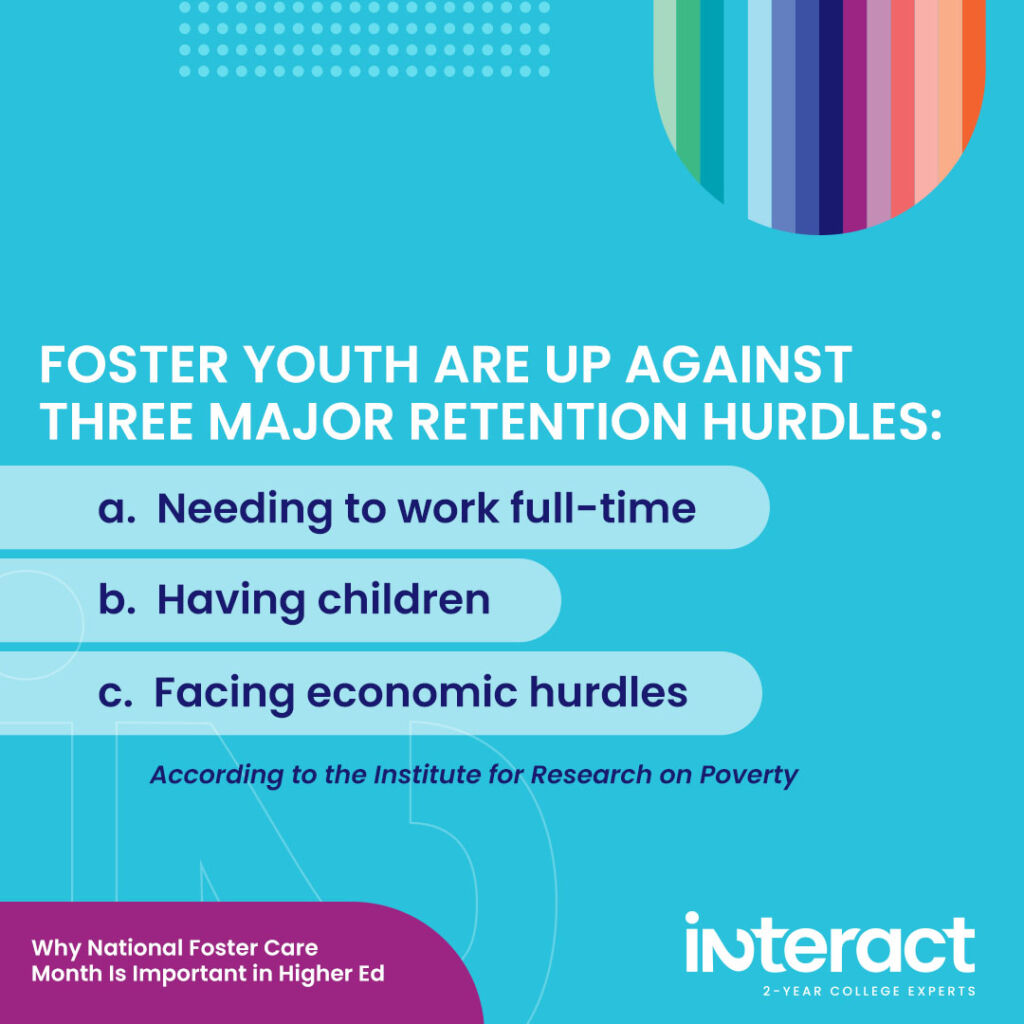
In particular, housing seems to be an especially pressing challenge for this demographic. According to the Hechinger Report article, “Couch Surfing, Living in Cars: Housing Insecurity Derails Foster Kids’ College Dreams,” 20% to 40% of former foster youth are housing insecure across the country. Without a steady base, these students take fewer classes and are more likely to drop out.
According to the 2015 study, The Relationship Between Food Security, Housing Stability, and School Performance Among College Students in an Urban University, students facing homelessness are 13 times more likely to fail their courses.
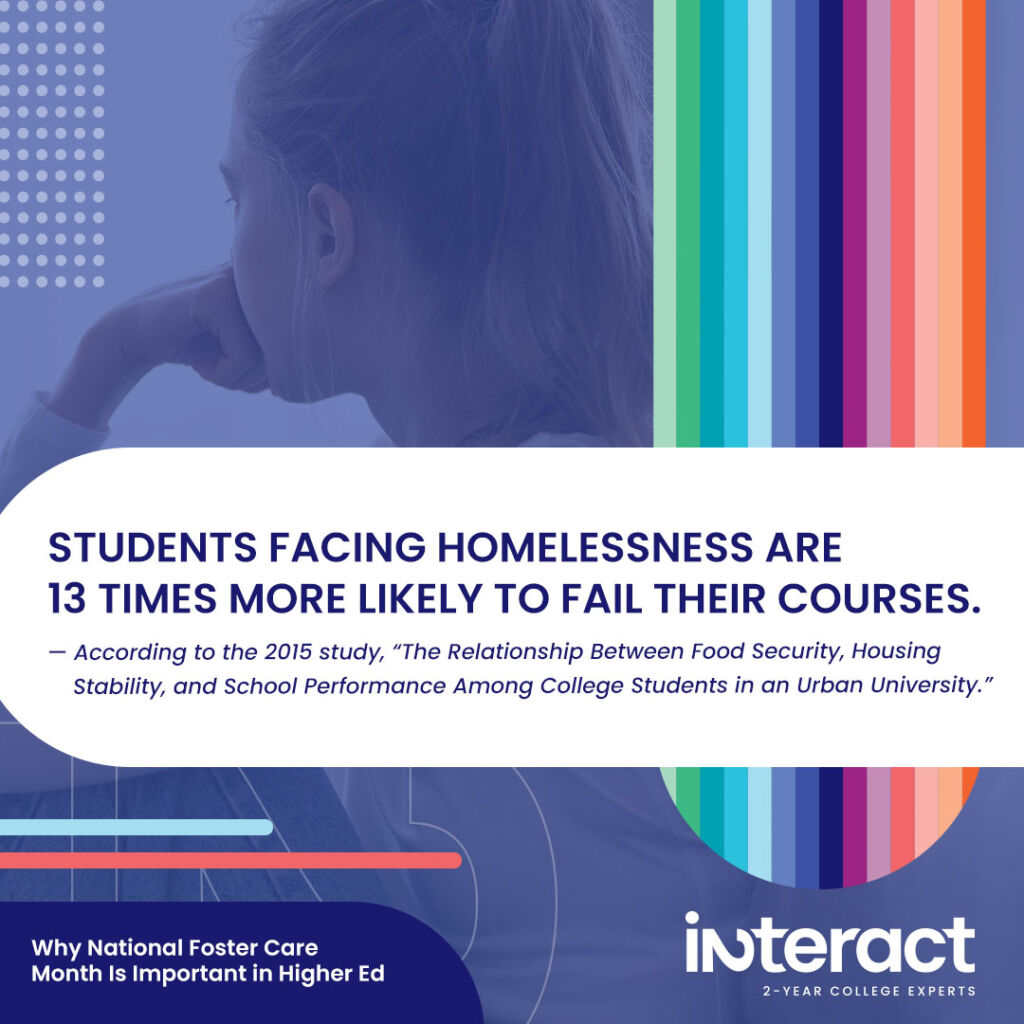
What Supports Do Foster Youth Need?
National Foster Care Month may happen in May, but these students need support all year round.
Housing
Housing support seems to top the list. Dorms are helpful, but on-campus housing is usually rare at two-year colleges. This is a pressing issue, since most foster youth begin their postsecondary studies at community colleges. In California, more two-year institutions are constructing on-campus housing, with some advocating for dorms specifically for foster care students.
Academic and Student Support
Additionally, specific student support services are key, according to the Inside Higher Ed article, “Understanding Factors of Student Success for Foster Students.” The article states, “A college or university that invested heavily in academic support, student services, and instruction was more likely to see degree completion among foster care youth.”

According to the article, these four strategies are crucial for supporting foster youth:
- Ensure students file the FAFSA to help finance their education.
- Add a question on your college application to help identify students with foster care experience.
- Make sure you have a foster youth program on campus to help students persist. As the article states, “Campus-based programs are most needed at two-year institutions.”
- Conduct more research into what supports your foster youth students need to succeed.
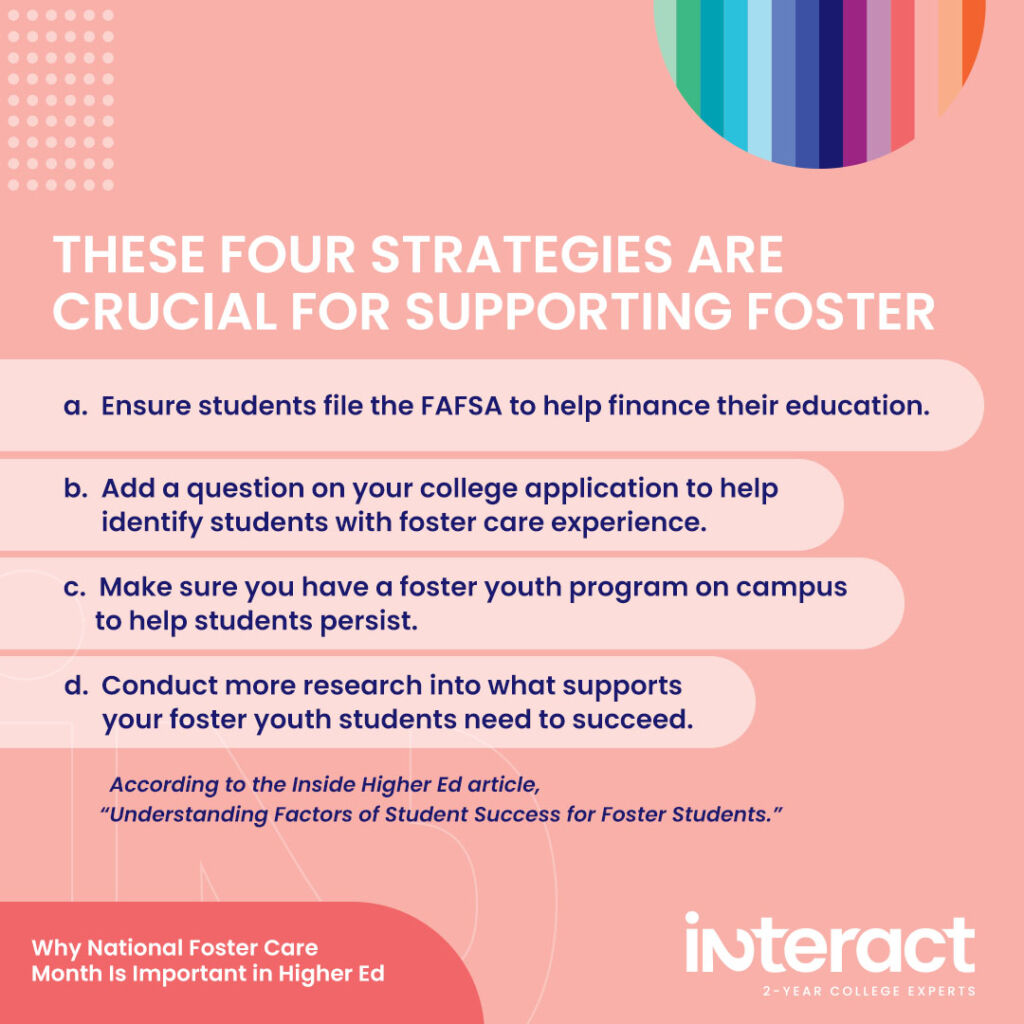
“Foster care students in college are often flying without a safety net,” states the National College Attainment Network article “Finding Their Footing: Highlighting Foster Care Awareness Month.” The article recommends helping foster students obtain specialized financial aid ASAP, helping them apply for campus jobs, and providing assistance with affordable housing and transportation.
College Knowledge
Finally, help foster youth receive the “college knowledge” they need to navigate campus. And ensure they have enough emotional support to transition to college.
Does your student service staff know how to help foster youth students? Are they able to connect them to resources and staff who can help? Asking these questions now and throughout the year can help you support this unique student population.
Conclusion: Celebrating National Foster Care Month Year-Round
May is the perfect time to inventory your support services to ensure you are helping foster youth students.
“Foster care students being a small subset of the college-going population often means they get overlooked and under-resourced, when in reality, they need more support than the average student.
“How will your equity action plan and the relevant execution accommodate foster care youth in college?”
Simone Pringle, Member Services Coordinator at the National College Attainment Network, Finding Their Footing: Highlighting Foster Care Awareness Month
As our CEO, Dr. Diane Walleser, says, “Strategies to support foster youth are essential to colleges’ DEI efforts. It’s our responsibility to ensure every single student has an equal opportunity to earn a degree and achieve a better, more secure future.”
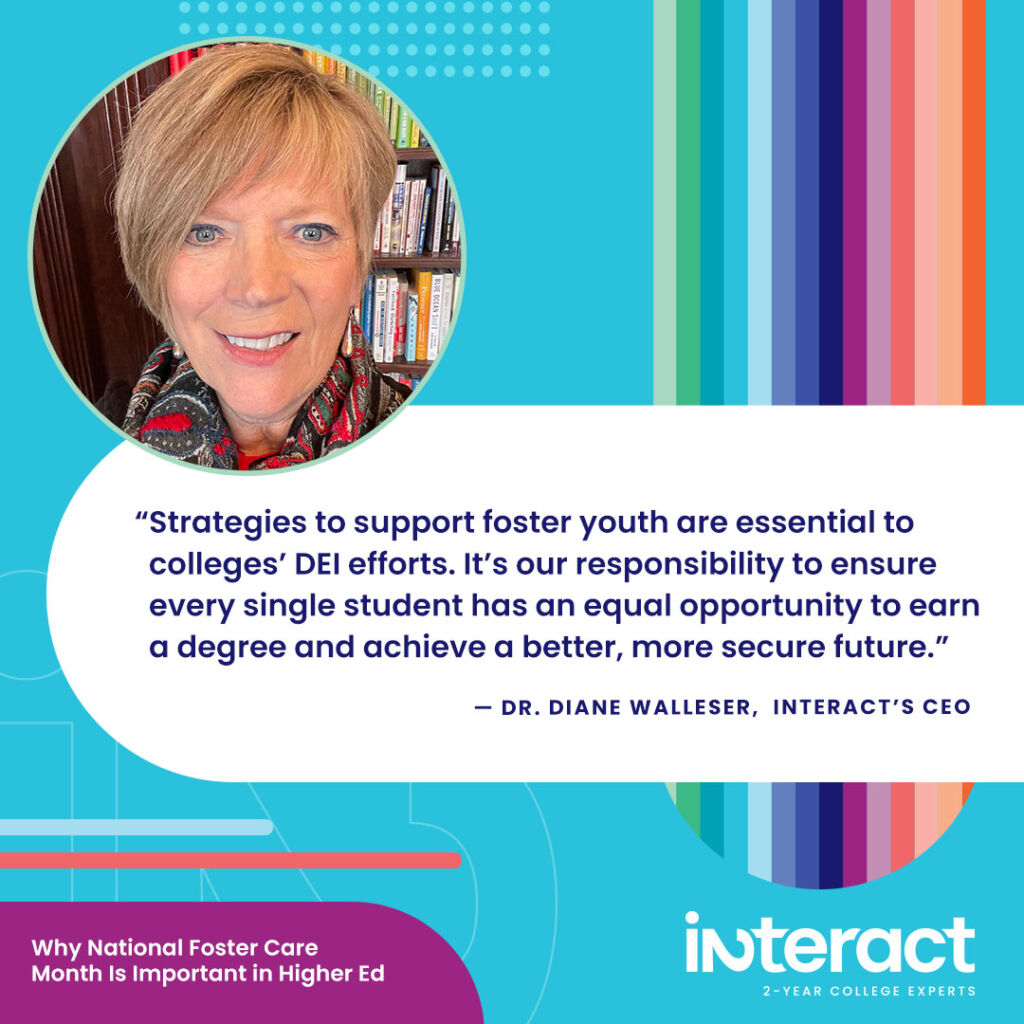
Read more:






